Overview
A complex of thunderstorms moving into eastern North Dakota during the late morning hours of July 31st gained strength as it approached then crossed the Red River into a more favorable environment in west central Minnesota by early afternoon. The storms produced damaging winds across portions of Richland county in far southeastern North Dakota and the Fergus Falls, Detroit Lakes, and Bemidji areas in Minnesota.Storm Reports
Header
 |
 |
| Severe Thunderstorm Watch Valid 12pm to 7pm | Preliminary Storm Reports |
266 NOUS43 KFGF 012259 PNSFGF MNZ001>009-013>017-022>024-027>032-040-NDZ006>008-014>016-024-026>030-038- 039-049-052>054-021059- Public Information Statement National Weather Service Grand Forks ND 559 PM CDT Thu Aug 1 2024 ...HIGHEST WIND REPORTS... Location Speed Time/Date 4 E Vergas 73 MPH 0228 PM 07/31 7 SSW Hankinson 67 MPH 1237 PM 07/31 Frazee MN DOT 67 MPH 0235 PM 07/31 2 NE Wilton 67 MPH 0340 PM 07/31 Wahpeton AP ND 66 MPH 0135 PM 07/31 3 SSW Mooreton 64 MPH 0103 PM 07/31 Fergus Falls MN DOT 60 MPH 0140 PM 07/31 5 WNW Dalton 60 MPH 0140 PM 07/31 6 W Fairmount 59 MPH 0103 PM 07/31 8 NNW Hastings 57 MPH 1145 AM 07/31 1 ESE Phelps 53 MPH 0144 PM 07/31 2 W Foxhome 52 MPH 0118 PM 07/31 Halstad MN DOT 52 MPH 0135 PM 07/31 1 SW Valley City 51 MPH 1157 AM 07/31 Herman MN DOT 51 MPH 0115 PM 07/31 Bemidji AP MN 51 MPH 0335 PM 07/31 Observations are collected from a variety of sources with varying equipment and exposures. We thank all volunteer weather observers for their dedication. Not all data listed are considered official. $$
Photos
Multiple reports of trees uprooted, as well as building damage.
 |
 |
|
|
Breckenridge Joshua Schwebach |
Bemidji Kyrstan Bewley |
Bemidji Christopher Muller |
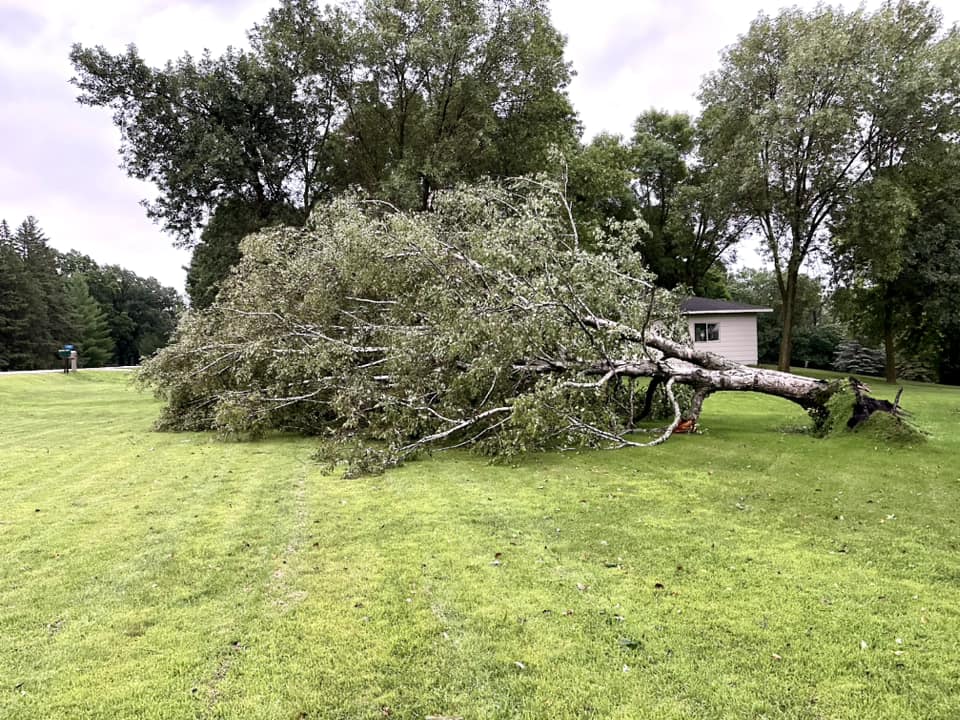 |
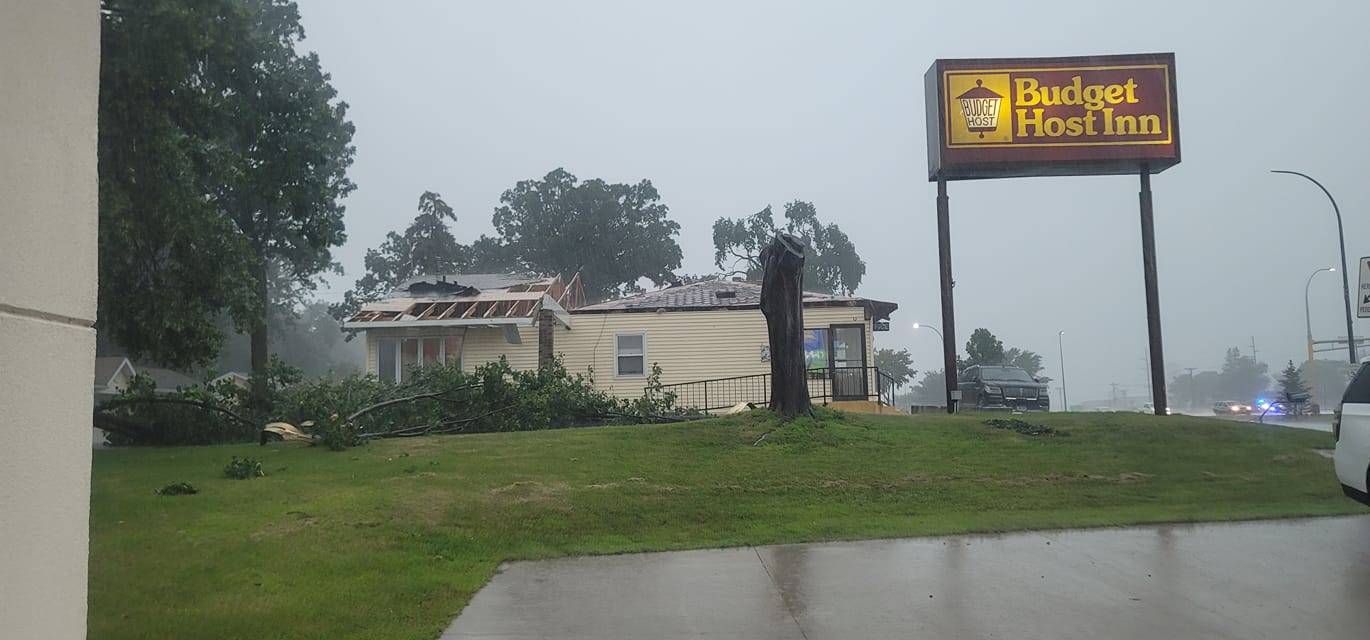 |
 |
 |
|
Fergus Falls Margene Newton |
Detroit Lakes Jared Hammer |
Frazee Steven Torres |
West of Frazee Karen Mitchell |
Radar
 |
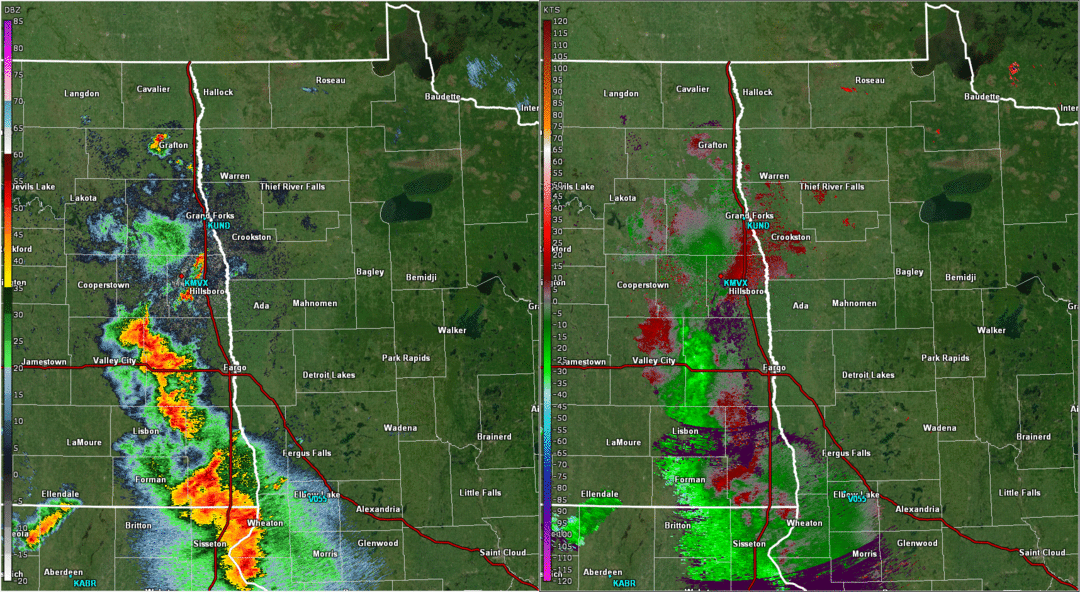 |
 |
|
Radar loop from around 11:10 AM to 12:35 PM. Reflectivity on left and Velocity on right. |
Radar loop from around 12:37 PM to 1:45 PM. Reflectivity on left and Velocity on right. | Radar loop from around 1:45 PM to 2:15 PM. Reflectivity on left and Velocity on right. |
Environment
The synoptic environment for this event included an upper level trough traveling eastward, across the Red River Valley, with areas of divergence aloft pushing through the environment (Figure 1). The trough pattern, consistent with divergence aloft downstream, is indicative of rising motion in these areas. Temperature advection at 700mb (Figure 2), shows warm air moving eastward in the late morning/early afternoon, leading to an environment conducive for storm development.
 |
 |
| Figure 1: 300mb height (black). divergence (magenta), wind (blue hatched >=60kts). | Figure 2: 700mb Temperature Advection |
There was an ample amount of CAPE (>3000 J/Kg) for storm development (Figure 3). Steep mid-level lapse rates also indicate an unstable environment able to support storm development (Figure 4). The Surface - 3km shear (Figure 5) shows shear vectors >=35kts in the late afternoon/early morning behind the storms leading to stronger inflow fueling the storms, and thus stronger winds as indicated by the "bowing" pattern seen using radar reflectivity. Due to the high shear and unstable environment, there was potential for large hail in our area (Figure 6.) Hail of 1.25in was reported in Grant County, MN - our southernmost county.
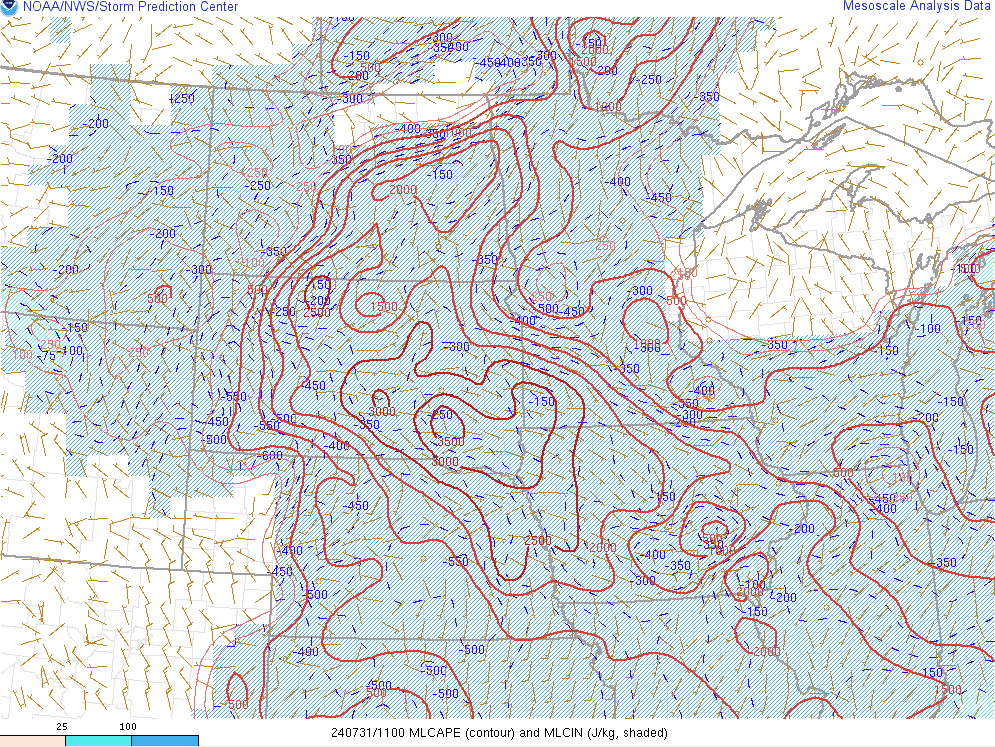 |
 |
|
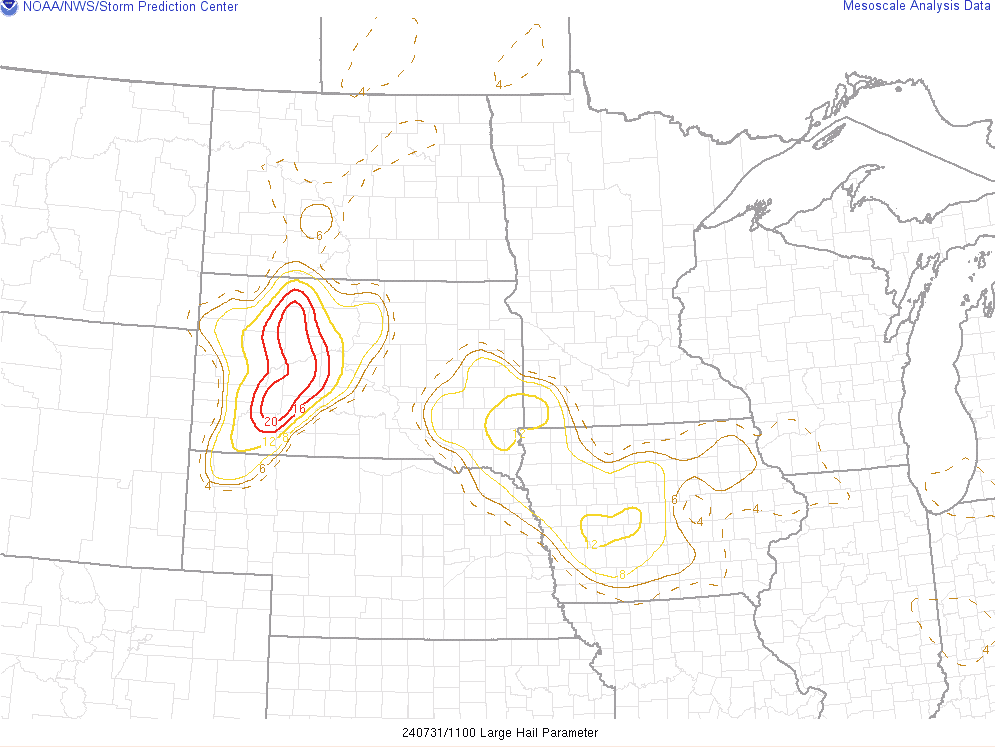 |
| Figure 3: MLCAPE (contour), MLCIN (Shaded) |
Figure 4: 700mb - 500mb Lapse Rates (contour, shaded), Radar Reflectivity |
Figure 5: Surface - 3km Shear (contour), Radar Reflectivity | Figure 6: Large Hail Parameter |
To view more storm reports, and the weather event review, you can visit the SPC Storm Report for this date.
 |
Media use of NWS Web News Stories is encouraged! Please acknowledge the NWS as the source of any news information accessed from this site. |
 |